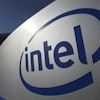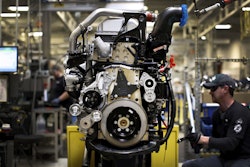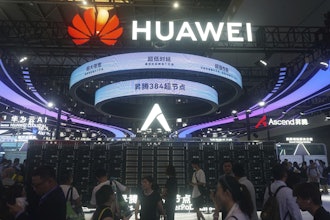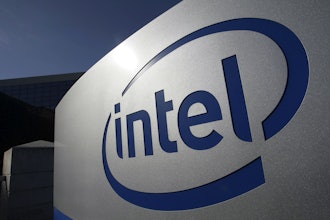As a processor and purveyor of food, you certainly don’t want a consumer to be harmed by your product or one of its ingredients. That’s why the ability to track, trace and find specific products throughout the supply chain is critical. Most businesses within the food supply chain acknowledge that the question is not will a recall occur, but when.
The food supply chain is long and complex, including foreign- and domestically sourced farms, processors, ingredients, manufacturers, packagers, distributors, shippers, stores and consumers. Regardless of your business and its place in the food supply chain, you’re required to maintain good records.
Ultimately, traceability results from accurate and consistent recordkeeping practices. Think your process is just fine? Here are some things to consider:
1. How manual is your recordkeeping?
Using staffers to manually record data at any point in a food processing operation leaves open the possibility of a mistake. For example, say a production worker pulls the inventory that corresponds to a batch ticket to send to processing. Being human, the worker might misread-read the ticket and select lot 132, instead of lot 123. Or, when later keying the lot information into your labeling template, the same worker might erroneously type “132” when the correct lot (“123”) was actually pulled.
In the event of a recall, mistakes such as these can make it difficult and more time consuming to determine precisely which batch was used and what lots are impacted—potentially leading to more wasted product than is necessary.
2. How many different systems does your operation use?
It’s not uncommon for businesses in a variety of industries, not just food, to deploy many different software systems (and/or manual data entry processes) throughout their operations. Look around. You might have completely different systems for maintaining recipes, sales, accounting, inventory, purchasing, production, receiving and shipping data.
Most companies haven’t given much thought to the disparity, because until recently it hasn’t been necessary—or even possible—for these systems to communicate. Which brings up the next question…
3. How well do your different systems interact?
If your business does have two or more different operational software systems in place, can the data flow automatically from one to the other? Or does someone have to export into a spreadsheet, reformat and import into another system? Is it easy to run reports that aggregate information from multiple sources, such as purchasing and inventory management for auditing purposes? Or, is it such a difficult task that reporting is done rarely?
If multiple steps are required to cross-reference product and inventory data from one system to another, chances are your information is out-of-date. Should an urgent need arise (such as a recall), determining the source of an ingredient, the specific batch that was used, the impacted product lots and their precise shipment destinations could take hours.
Streamlined Software Supports Traceability
The implementation of a single, cohesive software system that ties together all aspects of a food processing business—including batch and lot tracking, quality control, labeling, recipe management, purchasing, sales, production and accounting—is considered a best practice. While such an integrated system represents a significant investment, the benefits (including traceability) are likely to outweigh the costs.
The ideal system prevents mistakes in manual data entry by supporting automated data capture methodologies, such as hand-held barcode scanners. It automatically captures and carries the batch data associated with growers or manufacturing, pairs it with lot and expiration information generated at processing time, and passes it through storage and distribution to packaging and transportation of the product.
Further, a single, integrated software system should tie together enterprise resource planning (ERP) with warehouse management systems (WMS). Finally, it should do all of these things in real time, allowing you to instantaneously drill down and determine which products are impacted by a recall and which are not. A streamlined system enables a business to establish and maintain the process controls that are critical to maintaining product traceability and safety.
Compliance Benefits From Integrated Software
Replacing manual processes and multiple software platforms with a streamlined system gives food supply chain companies a variety of traceability benefits. Among them:
•,, ,Speed. Should a concern about an item arise, companies with such systems have the advanced functionality to target, locate and isolate impacted product in minutes. Taking hours to wade through a digital mountain of data is no longer acceptable, not when consumers are at risk.
•,, ,Accuracy. Because all of the components of a business are integrated by a single system, an increased level of data and detail can be attained. That means inventory can be searched by specific ingredient, as well as by stock keeping unit (SKU), universal product code (UPC), batch or lot level. The ability to know precisely which items went where allows a manufacturer to issue a recall specific to just those items.
•,, ,Waste Reduction. Targeted recalls ensure that only affected products are removed from the supply chain. Without the level of pinpoint accuracy offered by integrated software systems, manufacturers are forced to issue broader recalls that include products that might (or might not) be affected. Recalled product is wasted product, with associated costs.
•,, ,Relationship Support. Regardless of a company’s level within the food supply chain, all pass traceability data “one up/one back” to their immediate trading partners. Having an integrated software system ensures better support of those suppliers and customers, allowing information to be more easily transmitted and searched on demand.
Benefits Beyond Traceability
Integrated software that enhances traceability also offers benefits beyond fast location of targeted inventory for recalls, adding further justification for the investment. Among them:
Brand Protection. Thanks to the Internet-fueled 24-hour news cycle, product recalls are more visible today than ever before. Between national news and social media, if a product recall goes viral it will likely cause significant damage to a company’s reputation and sales. Yet, with the popularity of retailer-issued shopper incentive cards, the impact of a recall on a brand can be minimized. With manufacturing data tied to a retailer’s point-of-sale (POS) system, a recall might only require an automated phone call to purchasers requesting the item be returned to the store—instead of broadcasting it on the news.
Better Inventory Visibility. Because the software provides real-time intelligence, companies can use the same track and trace data to enhance analytics and reporting. With such a system, first-in/first-out (FIFO) inventory rotation can ensure that the product with the closest expiration date is shipped first, preventing waste. Having this level of insight also allows for better inventory forecasting and more strategic operational decisions.
Error Prevention. For distributors, enhanced identification and tracking of products at a more granular level improves accuracy in filling customer orders. In manufacturing, populating the system database using automatic data-capture devices (instead of manual data entry) can prevent formulation errors, such as adding the wrong ingredients—substituting salt for sugar, for example.
Quality Control. Well-integrated systems also help companies manage returns better. If the same product is returned multiple times, a root-cause analysis of the track and trace data might reveal a quality issue with a specific ingredient or supplier. The information can be used to inform a discussion with a vendor, or to trigger a recall alert.
Consistent Customer Experience. For retailers in particular, advanced traceability functionality can be used to ensure shelf consistency at all outlets. The ripest produce can be shipped to the stores closest to the point of distribution; the greener produce can ripen during transit to stores at more distant locations. This increases the likelihood that shoppers at all locations will have the same product experience.
Reduced Insurance Premiums. With a better track and trace software system, it might be possible to demonstrate to an insurance carrier that the potential losses from a recall are being better managed, and the risk reduced.
About the author
Monika Pelz is head of Armanino’s Food & Beverage Practice. She has been assisting organizations with their accounting and compliance needs for more than 17 years. Her audit experience includes work within the food and beverage industry including Ramar Foods, Atkin Nutritionals, Bell-Carter Food, Choice Lunch, Columbus Foods, Beverages & More!, Donsuemor, Harry & David, Pokka Beverages, Pik-Nik Foods, Sun Pokka Citrus, Magnolia’s Brewing Company and Wine.com





















